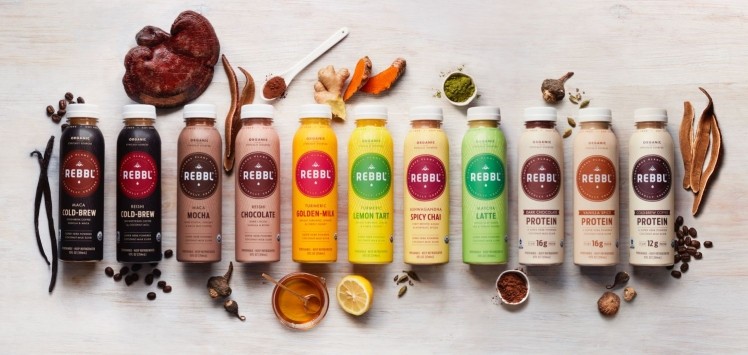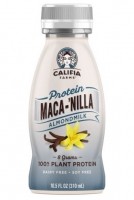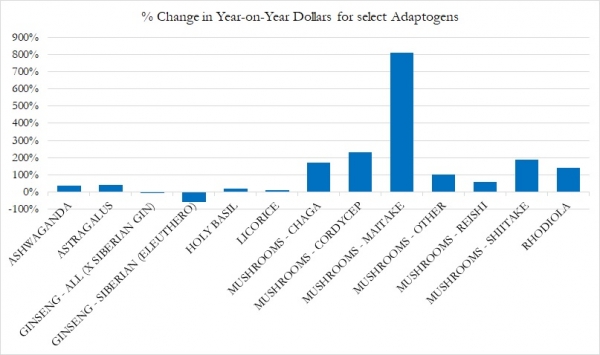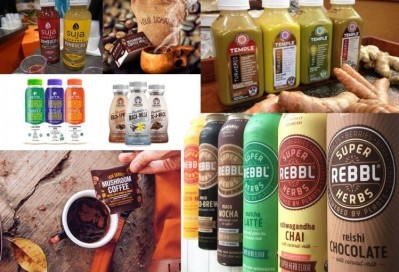Adaptogens are here to stay but marketing them effectively will require creativity and innovation, say experts

Adaptogens are defined as: “Non-toxic substances and especially plant extracts that are held to increase the body's ability to resist the damaging effects of stress and promote or restore normal physiological functioning” (Merriam-Webster). They basically allow you to adapt to the various stresses and strains that life throws at you.
The most common adaptogens are Ashwagandha (Withania somnifera), Rhodiola rosea, Ginseng (Panax ginseng), Maca (Lepidium meyenii), Holy Basil (Ocimum sanctum), Eleuthero (Eleutherococcus senticosus), Schizandra (Schisandra chinensis), and licorice (Glycerhiza glabra), while medicinal mushrooms like Reishi (Ganoderma lucidum), Maitake (Grifola frondosa), and Shiitake (Lentinus edodes) also make the list.
A number of niche brands are gaining mainstream attention using adaptogens, said Ilana Orlofsky, Marketing Manager for Illinois-based Imbibe. “Califia Farms has a Maca-‘Nilla almond milk, while Rebbl has built their brand around superfoods, with an emphasis on adaptogens, Four Sigmatic specializes in beverages with mushrooms, and GT’s recent launch of sparkling probiotic ciders incorporate adaptogenic mushrooms into their beverage blends,” she said.
Food service outlets are also experimenting with them, noted Kantha Shelke, Ph.D., CFS, Principal at food science and research firm Corvus Blue LLC, with Starbucks recently launching Latte with turmeric in London, while bartenders and mixologists have been playing with adaptogens for a number of years, she said.
California-based Project Juice also recently launched a new range of adaptogen lattes positioned to help consumers “battle the stressors of the season”. The lattes are formulated with adaptogens such as chaga and reishi mushrooms, Rhodiola, gurana, and Holy Basil.
These trailblazing brands are concentrated in the beverage space, because of the ease in formulation, because of how they are marketed in the US and because of the willingness of American consumers to try anything that is offered in a beverage format from beverage makers they trust, said Dr Shelke.
“Incorporating adaptogens into foods is a little more difficult because of the emotional ties that these very same Americans have with their foods…and their unwillingness to try a new ingredient in their favorite peanut butter or a new adaptogen in their pesto or tomato sauce,” she said.
What about the big boys?
Jim Tonkin, founder and president of HealthyBrandBuilders, is working with a couple of start-up brands using adaptogens, including LA-based Immordl, a triple-distilled, cold-brewed arabica coffee formulated with three adaptogens: Rhodiola, Maca and Guarana, as well as chia, coconut milk and coconut oil. It has been described by New York Times best-selling author Julie Morris as “liquid luxury”.
“Coke and Pepsi are not launching an adaptogen product tomorrow but they have done a lot of R&D on it,” he told us. “The smaller companies that you’d see at Expo West – they are very aware of adaptogens and many have products in the market now with multiple delivery systems.”
Many of these early entrants to the market are playing in the energy space, which is not surprising given the dynamics of the category and the mechanisms of action of the ingredients, said Tonkin. “Because energy is such a big space it’s one of the first go-to plays and there’s still a need for natural energy products for consumers,” he said.
On the flip side, the relaxation and anti-stress category also provides opportunities for these ingredients. Another product Tonkin has been involved in is called Taki Mai, formulated with kava (Piper methysticum) and positioned for anti-stress and relaxation.
“Certain adaptogens work better for specific categories, and they often will help dictate what the benefits of that product are,” noted Imbibe’s Orlofsky. “Within energy beverages, for example, ginseng is a really common adaptogen, whereas ashwagandha and lavender are more prevalent in relaxation beverages and supplements.”
Tea & coffee
Teas and coffee (refrigerated RTD and shelf-stable versions) are a key category for adaptogenic ingredients. Data from SPINS shows that the vast majority of sales across mass, natural, and gourmet channels for adaptogens occur in teas and coffee with ginseng, licorice, and Holy Basil the leading adaptogens listed (SPINS do not break it down between the two beverages).
Sales of teas and coffees with ginseng as the functional ingredient exceeded $200 million, while licorice was a distant second at just over $9 million, and Holy Basil third with just under $7 million.
Some of the biggest growth in year-on-year sales are for the mushrooms (see chart below), with food and beverage products formulated with Maitaki, Cordycep, and Shiitake posting increases in sales of 811%, 230%, and 189%, respectively. The biggest year-on-year increase on the herbal side was for Rhodiola, which grew 140%, albeit from a very small base.
The regulatory consideration
Consumer understanding and awareness is a key issue for brands to consider as they eye the potential of adaptogens, and the current consumers are a diverse bunch, according to Dr Shelke. “The consumers with the awareness and willingness to try products with adaptogens is limited to consumers who have heard the term. They’re not typical health and wellness consumers, and range from athletes to the over 70s who are disappointed with pharmaceuticals are turning to adaptogens,” she said.
Growing awareness is one challenge, but another is marketing them without overstepping the boundaries of what you’re allowed to claim.
“These products span a number of categories because the opportunity awaits to not only develop a product that delivers a palpable effect but also to figure out how to convey the benefits to the market without risking the wrath of vigilant regulators who are not quite sure how to classify adaptogens and products made with adaptogens,” said Dr Shelke.
“The concept of adaptogens is not new in the foods of many old cultures…marketing them effectively in the current regulatory climate will require creativity and innovation.”
One of the best-researched ‘super herbs’ in REBBL’s armory is Ashwagandha (pictured left), the flagship herb of Ayurveda. The herb has been steadily gaining traction among dietary supplement consumers who are embracing its wide-ranging body of health benefits, which include supporting stress, cognitive function, sleep, metabolic wellness, adrenal function, sports performance, and more. Herbal supplement sales of ashwagandha grew 55.2% year-on-year in the natural channel from 2015 to 2016 to hit $8.7 million, according to a report in the American Botanical Council’s Herbalgram.
The name ashwagandha derives from Sanskrit, and means “smells like a horse”, which refers to the strong smell of the root which is said to be redolent of horse sweat or urine.


















